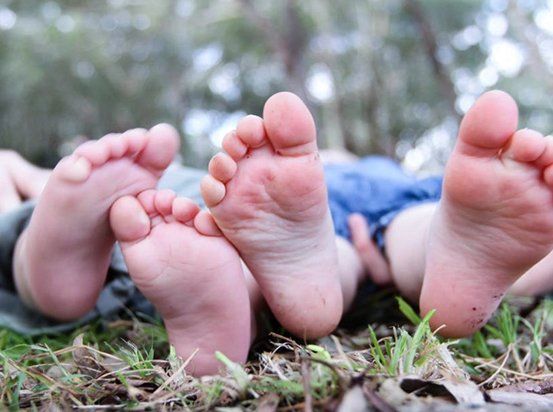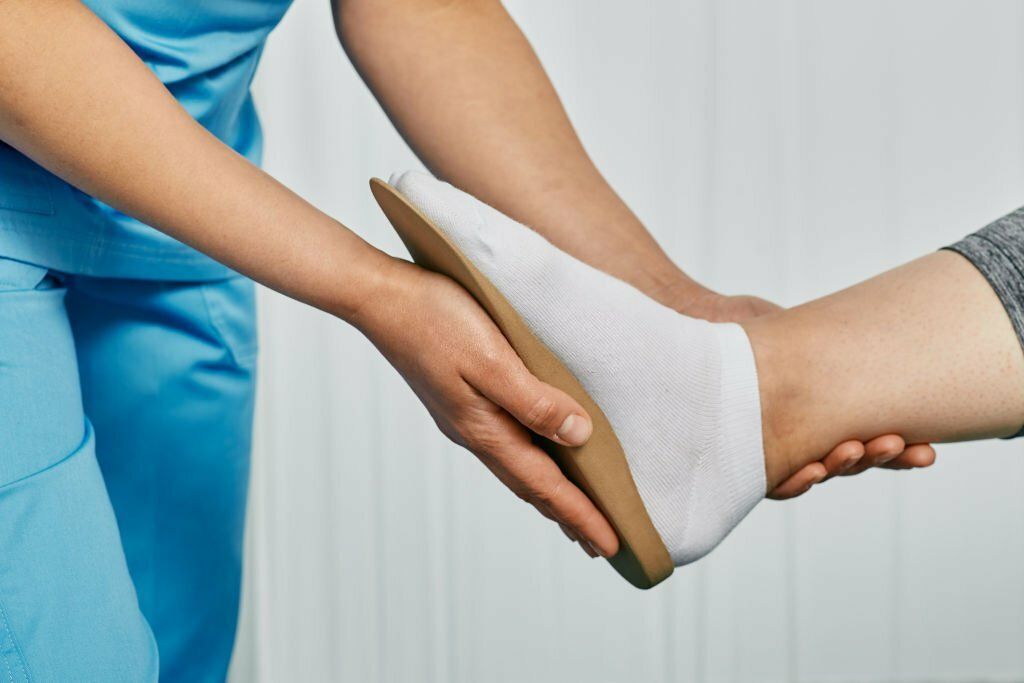Intoeing
What is Intoeing?
Intoeing, also called "pigeon-toed" or "in-toeing," is a common foot issue where one or both feet turn inward instead of straight. It often happens in kids while they are growing up. Knowing some important things about intoeing is important to figure out the problem and how to treat it. It is common in children and can be caused by different things like weird bone growth or muscle issues. Sometimes, getting better on its own as a child gets older, but it is important to get help early for serious cases. To find out if someone has intoeing, doctors look at how they walk, check their family history, and might do some tests. Intoeing usually does not hurt, but if it has not been taken care of, it could cause problems with how someone walks, so it is a good idea to get help early on.
Intoeing Risks
While intoeing itself is not usually a painful condition, there are certain risks associated with leaving it untreated. Understanding these risks is crucial for proactive care and prevention.
Common Risks:
- Gait Abnormalities:
Untreated intoeing can contribute to abnormal walking patterns, potentially leading to discomfort and imbalances. - Foot and Leg Strain:
Prolonged intoeing may put additional strain on the feet, ankles, and legs, causing discomfort and muscle fatigue. - Balance Issues:
In severe cases, intoeing may affect balance, increasing the risk of trips and falls.
Intoeing Symptoms
Identifying the symptoms of intoeing is crucial for early detection and intervention, enabling parents to address the condition promptly. Recognising these signs aids parents in understanding and responding to potential issues in their children's foot development.
- Inward Rotation of Toes
This is the primary visual indicator of intoeing, where one or both feet show an inward rotation. Parents may notice the toes pointing inward rather than straight ahead during walking or stnding. - Walking Pattern
Children with intoeing often display an awkward or clumsy walking pattern. Observing how a child walks can reveal any irregularities, such as a gait that appears less smooth or coordinated than typical. - Toe-Tripping
Intoeing can lead to an increased incidence of tripping or stumbling over the toes. Parents may observe their child experiencing more frequent toe-tripping incidents, which could be linked to the inward rotation of the feet. - In-toed Posture
A child with intoeing may naturally adopt an in-toed posture while standing or sitting. This posture is characterised by the tendency to prefer positions where the feet turn inward. Observing the child's usual stance can provide insights into the presence of intoeing.
Treatments and Preventions
Effectively managing intoeing requires a comprehensive approach that combines various treatments and preventive measures to target the root causes and encourage natural development.
Observation:
For mild cases of intoeing, a watchful waiting approach is often recommended. Many instances may resolve naturally, as a child grows, and close observation by parents and healthcare professionals is crucial. Regular monitoring allows for the identification of any changes in the condition and ensures timely intervention if needed.
Orthotic Devices:
Custom orthotic devices play a key role in correcting foot alignment and supporting normal development. These specially designed inserts are crafted to address the specific needs of individuals with intoeing. By providing targeted support to the feet, orthotics assist in improving the overall alignment and function, contributing to a more natural gait.
Stretching Exercises:
Specific stretching exercises may be prescribed to target muscle imbalances that contribute to intoeing. These exercises are designed to promote flexibility and strength in the muscles surrounding the feet and legs. Regular practice of these exercises can aid in correcting imbalances and enhancing the overall function of the lower limbs.
Corrective Footwear:
Properly fitted shoes play a crucial role in correcting walking patterns and supporting healthy foot development. Choosing footwear with adequate arch support and stability helps align the feet in a more natural position. Podiatrists may recommend specific types of shoes that suit the individual's foot structure, promoting proper gait mechanics and minimising the impact of intoeing.
Schedule Your Appointment with PS Foot Clinic
If you suspect intoeing in your child or are experiencing related concerns, our experienced podiatrists at
Port Stephens Foot Clinic are here to help. Schedule an appointment at any of our convenient locations in Newcastle, the Hunter Valley, and Port Stephens to receive personalised care and guidance for intoeing conditions. Our dedicated team is committed to providing the best solutions for all your foot health needs.
Foot problems
How to fix Foot problems
Cutting Toenails
Cutting Toenails Newcastle Podiatry
Diabetes
We treat diabetic podiatry with a range of services and assessments
Heel Pain
Newcastle Heel Pain Podiatry
Ingrown Toenails
Ingrown Toenails Newcastle Podiatry
Plantar Fasciitis
Plantar Fasciitis Newcastle Podiatry
Custom Orthoses
Custom Orthoses Newcastle Podiatry
Corns and Callus
Corns and Callus Newcastle Podiatry
Bunions
Bunions Newcastle Podiatry
Children’s Feet
Children’s Feet Newcastle Podiatry
Fungal Nails
Fungal Nails Newcastle Podiatry
Heel Pain in Children (Calcaneal Apophysitis)
Heel Pain in Children (Sever's Disease) Newcastle Podiatry
Achilles Tendonitis
Achilles Tendonitis Newcastle Podiatry
Plantar Warts
Plantar Warts Newcastle Podiatry
Sesamoids
Sesamoids Newcastle Podiatry
Foot Pain
Read MoreCorn & Callus Removal
Read More- Port Stephens Foot Clinic Lemon Tree Passage Location 1061 Lemon Tree Passage Rd, Tanilba Bay NSW 2319, Australia
- Port Stephens Foot Clinic Medowie Location 28A Ferodale Rd, Medowie NSW 2318, Australia
- 1/199 Adelaide Street Raymond Terrace 2324 Raymond Terrace, 1/199 Adelaide St, 2324, NSW, Australia
- Port Stephens Foot Clinic Lambton Location 94 Elder St, Lambton, NSW, Australia
- Port Stephens Foot Clinic Kurri Kurri 110B Lang St, Kurri Kurri, 2327, NSW, Australia
© Copyright 2025 | All Rights Reserved | Port Stephens Foot Clinic





















